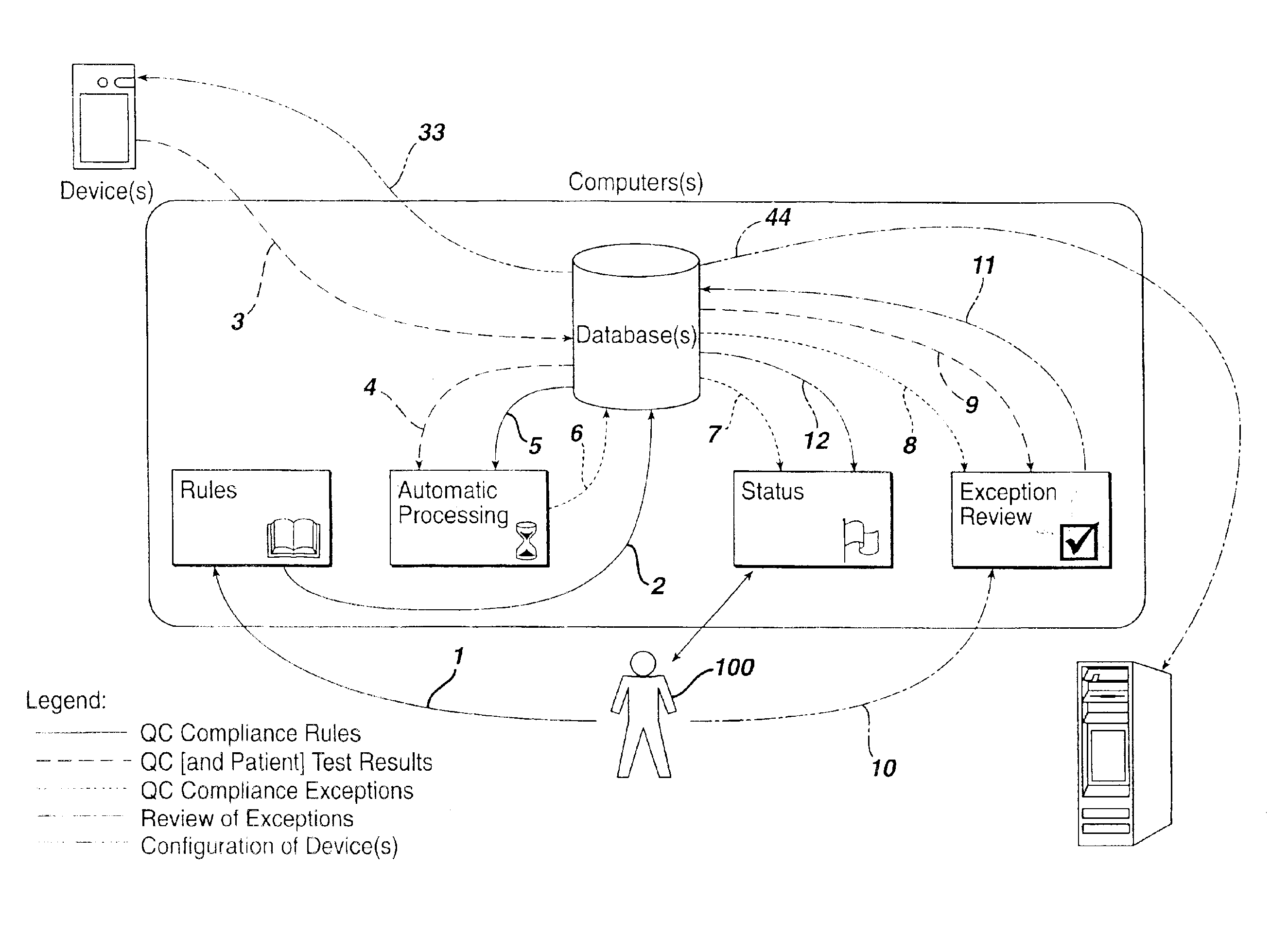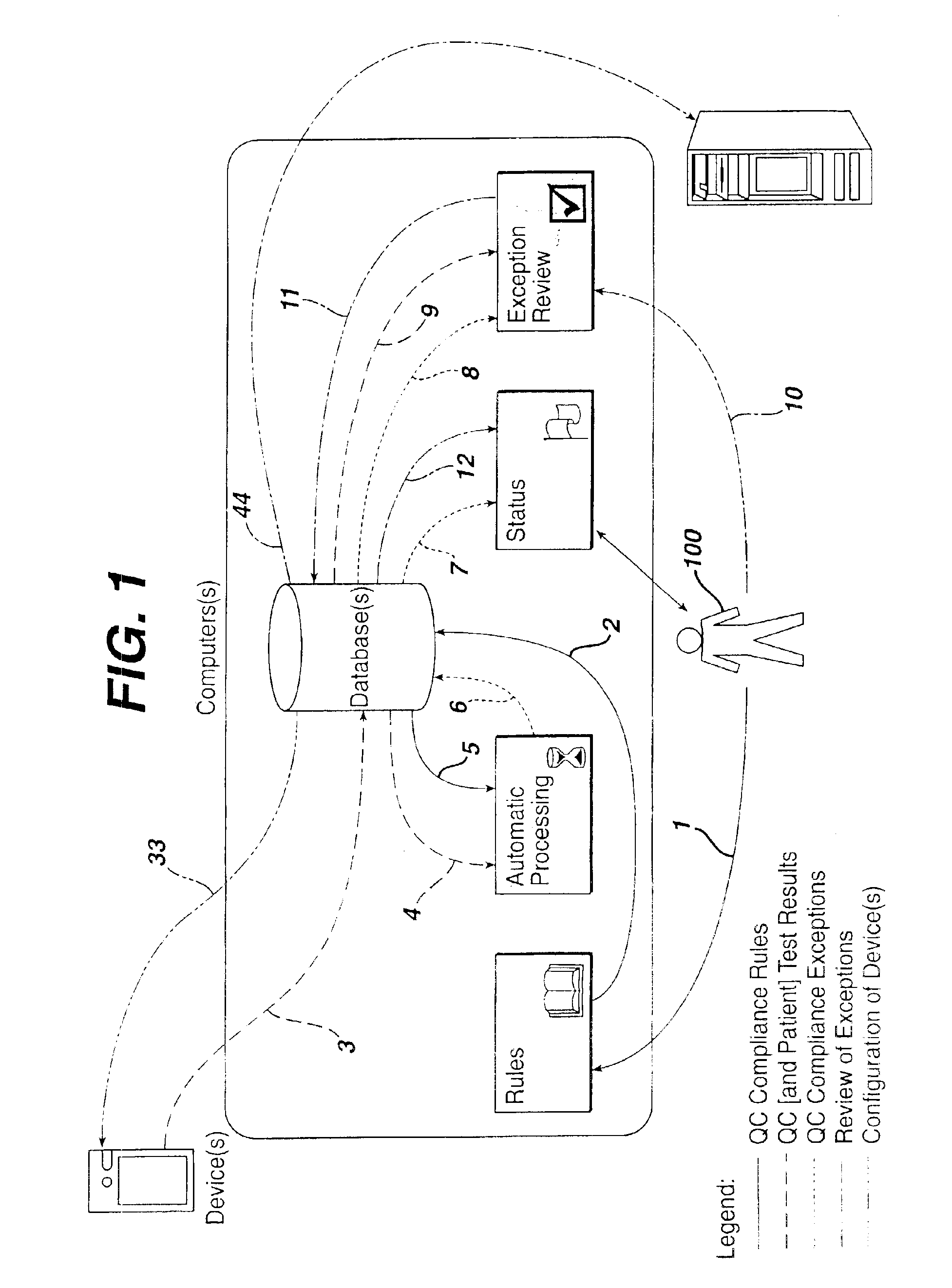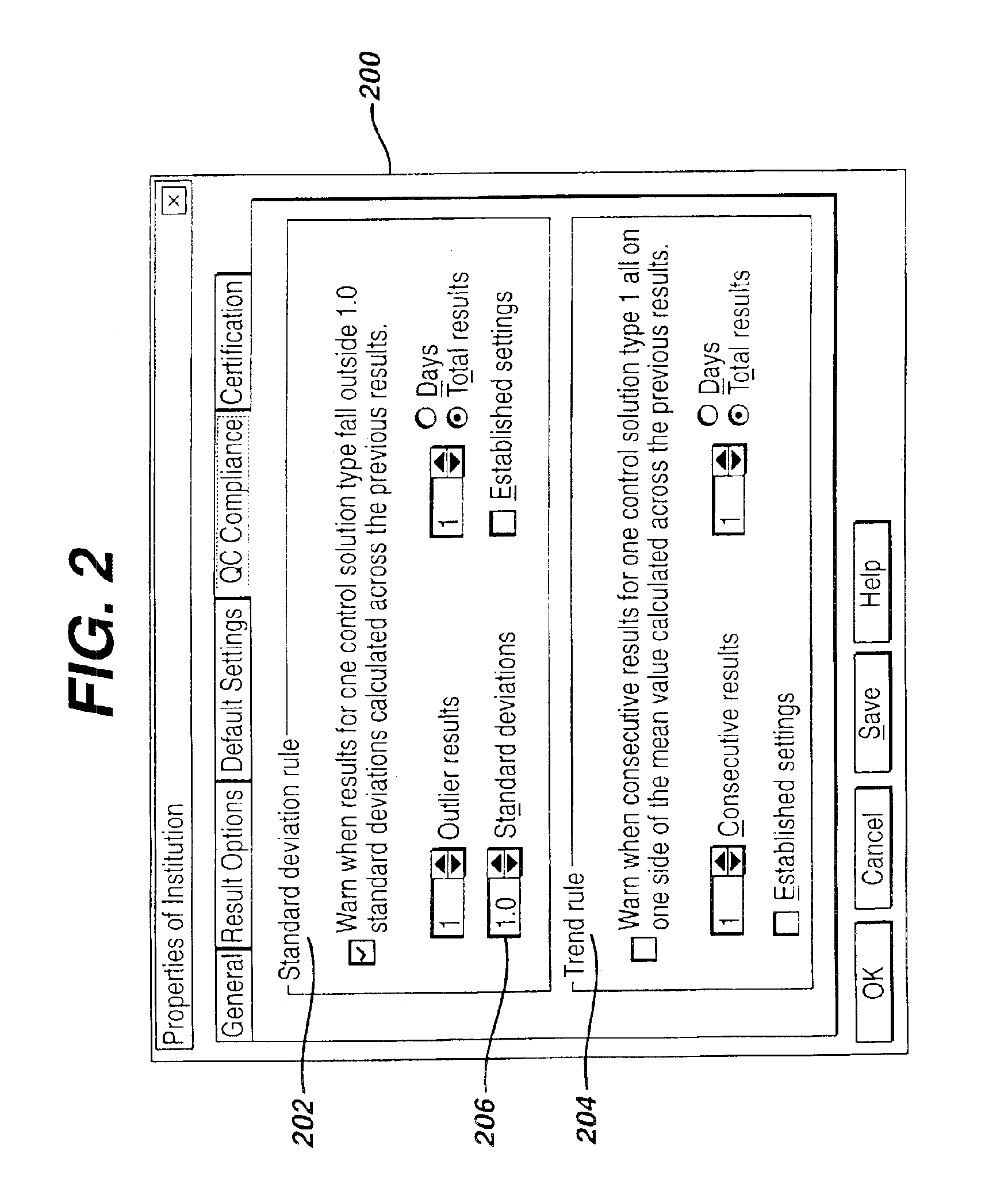Method for automated exception-based quality control compliance for point-of-care devices
a technology of quality control and point-of-care devices, applied in the analysis of testing process, instruments, nuclear elements, etc., can solve the problems of random errors and systematic errors in a quantitative system, measurable degree, and systematic errors, so as to improve patient care, improve the quality and outcome of care, and reduce the cost and length of stay.
- Summary
- Abstract
- Description
- Claims
- Application Information
AI Technical Summary
Benefits of technology
Problems solved by technology
Method used
Image
Examples
Embodiment Construction
A preferred embodiment of this system and method is depicted in FIG. 1. The data paths or steps (numbered from 1 to 12) are preferably conducted in the specific and unique order illustrated and outlined within this disclosure. These data flows are identified as QC compliance rules, QC test results (and optionally associated patient test results) from POC devices, QC compliance exceptions, and review of exceptions. Two additional data flows, configuration of device(s) and patient test results (and optionally associated QC test results) to information system(s), while elements of this disclosed method, are not sequenced by the disclosed method. The sequencing of these additional data flows may vary based upon configuration of the computer-implemented method. Furthermore, embellishment or addition of data flows to the system and method disclosed can be shown to not change the nature and utility of this method. The components of the computer-implementation (i.e., rules, automatic proces...
PUM
 Login to View More
Login to View More Abstract
Description
Claims
Application Information
 Login to View More
Login to View More - R&D
- Intellectual Property
- Life Sciences
- Materials
- Tech Scout
- Unparalleled Data Quality
- Higher Quality Content
- 60% Fewer Hallucinations
Browse by: Latest US Patents, China's latest patents, Technical Efficacy Thesaurus, Application Domain, Technology Topic, Popular Technical Reports.
© 2025 PatSnap. All rights reserved.Legal|Privacy policy|Modern Slavery Act Transparency Statement|Sitemap|About US| Contact US: help@patsnap.com



